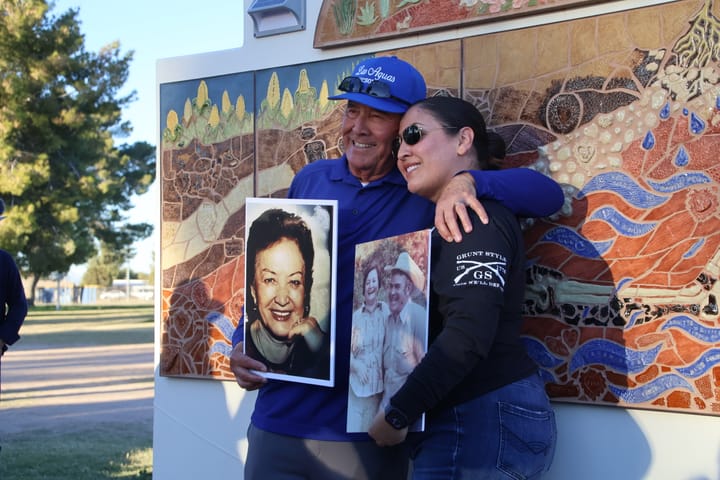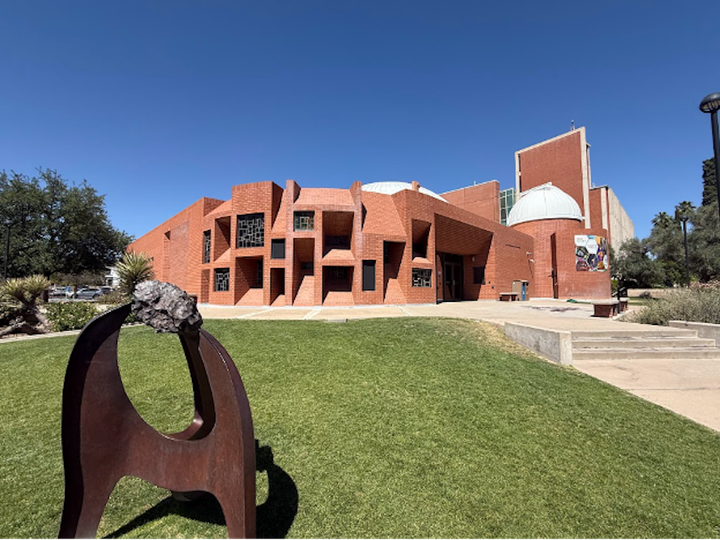Tucson’s El Tiradito endures as a beacon of faith and memory
As Día de los Muertos and All Souls Procession bring Tucsonans together in remembrance, the century-old El Tiradito shrine continues to glow with candles lit for love, loss and enduring faith.
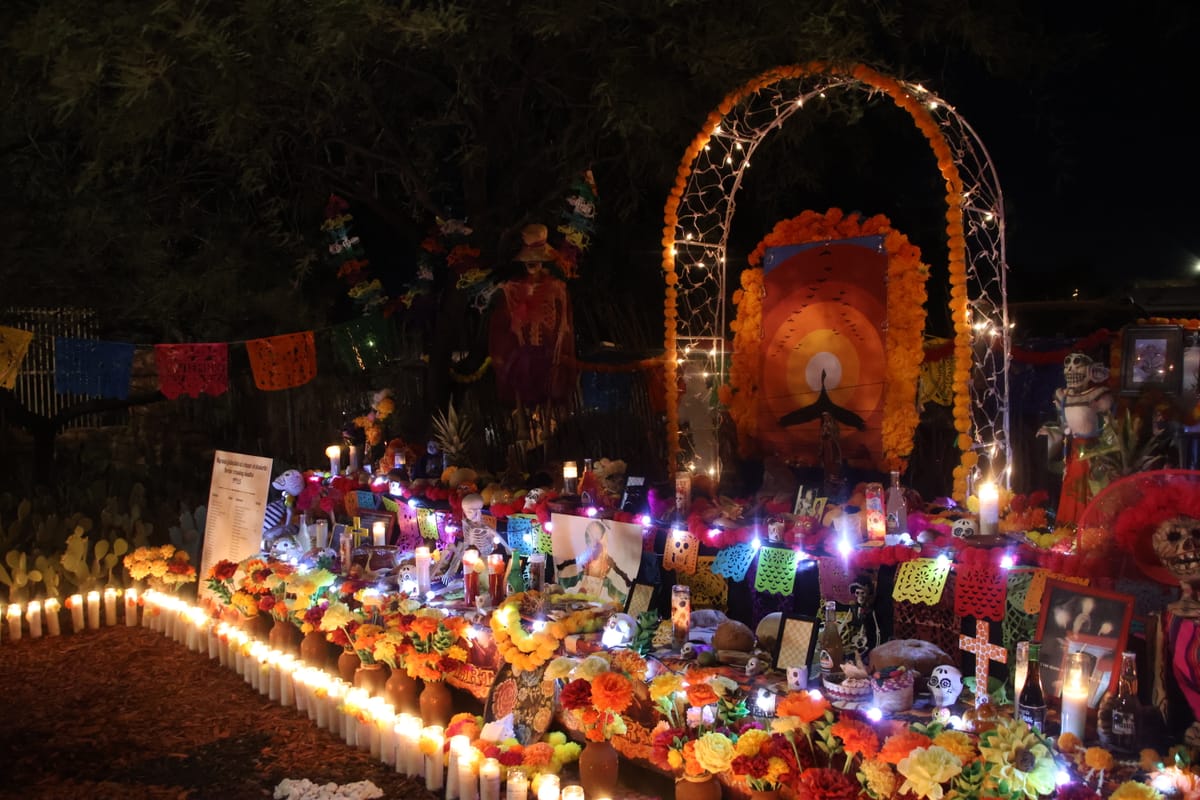
As dusk settles over Barrio Viejo, the soft glow of candles fills the small courtyard of El Tiradito, Tucson’s centuries-old wishing shrine.
Visitors pause before the flickering lights, some to pray, others to remember, or simply to feel connected to something sacred.
With the recent celebration of Día de los Muertos and this weekend’s All Souls Procession, the humble brick wall once tied to a tragic love story has again become a place where Tucsonans gather to honor loss, hope and the enduring pull of tradition.
The shrine’s name, “The Little Castaway,” comes from a legend of forbidden love and tragic loss. Over time, the site has become a place where people leave candles, notes and photos in search of healing, luck or forgiveness.
“The candles are, to me, symbols of petition and respect — offerings to God letting Him know that we are honoring Him,” said Mauro Trejo, historian and Tucson cultural expert.
Teresa Shaar, owner of El Minuto Café next door, said she still feels a deep reverence whenever she visits.
“I feel chills when I walk in there,” Shaar said. “People still come if someone is sick or needs something. They’ll tell me, ‘We came to eat after visiting the shrine.’ It means a lot to this neighborhood.”
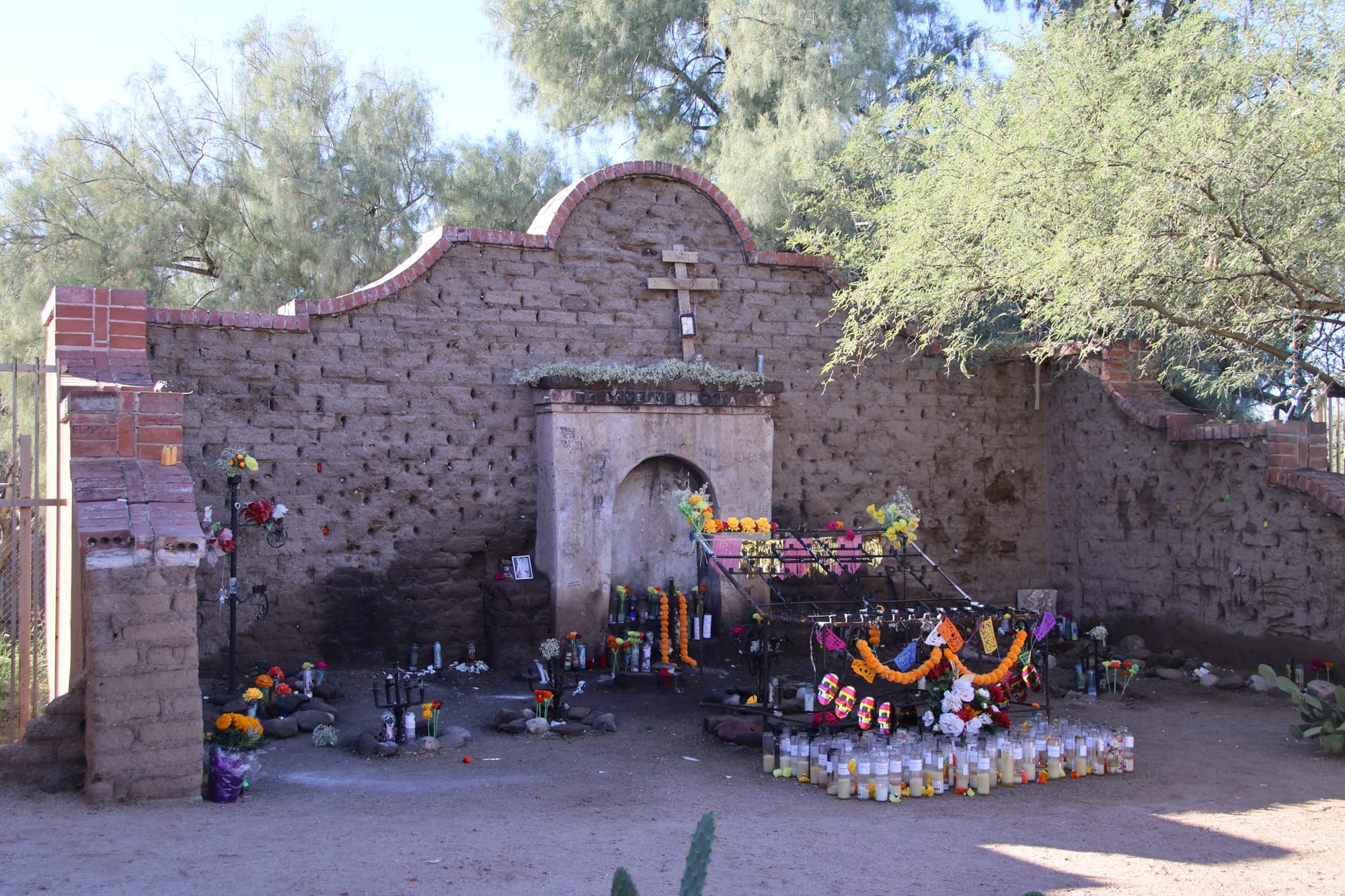
Shaar’s family has owned the café for generations. She grew up hearing stories about the shrine and remembers when it looked rougher and more mysterious.
"When I was a kid, the wax would melt all over and sometimes we’d accidentally set it on fire,” she said with a laugh. “I liked how it looked before they fixed it. It had that old feeling.”
She also remembers a version of the story few others know.
“The story I grew up with was about a love triangle between a priest and a married couple,” she said. “The husband killed them, and they’re buried behind the wall of the shrine.”
Though the tale varies, one thing never changes: the presence of candles. Every day, people stop by to light them and keep the shrine’s spirit alive.
“El Tiradito represents the preservation of tradition through a physical proxy,” Trejo said. “The shrine is city property. It is not a Catholic shrine and is not maintained by any church. It belongs, in a very real way, to the community and to the unique expressions of worship, spiritualism and tradition that live on.”
Located in one of Tucson’s oldest neighborhoods, the shrine is surrounded by adobe homes, quiet streets and murals that reflect the city’s Mexican and borderland roots.
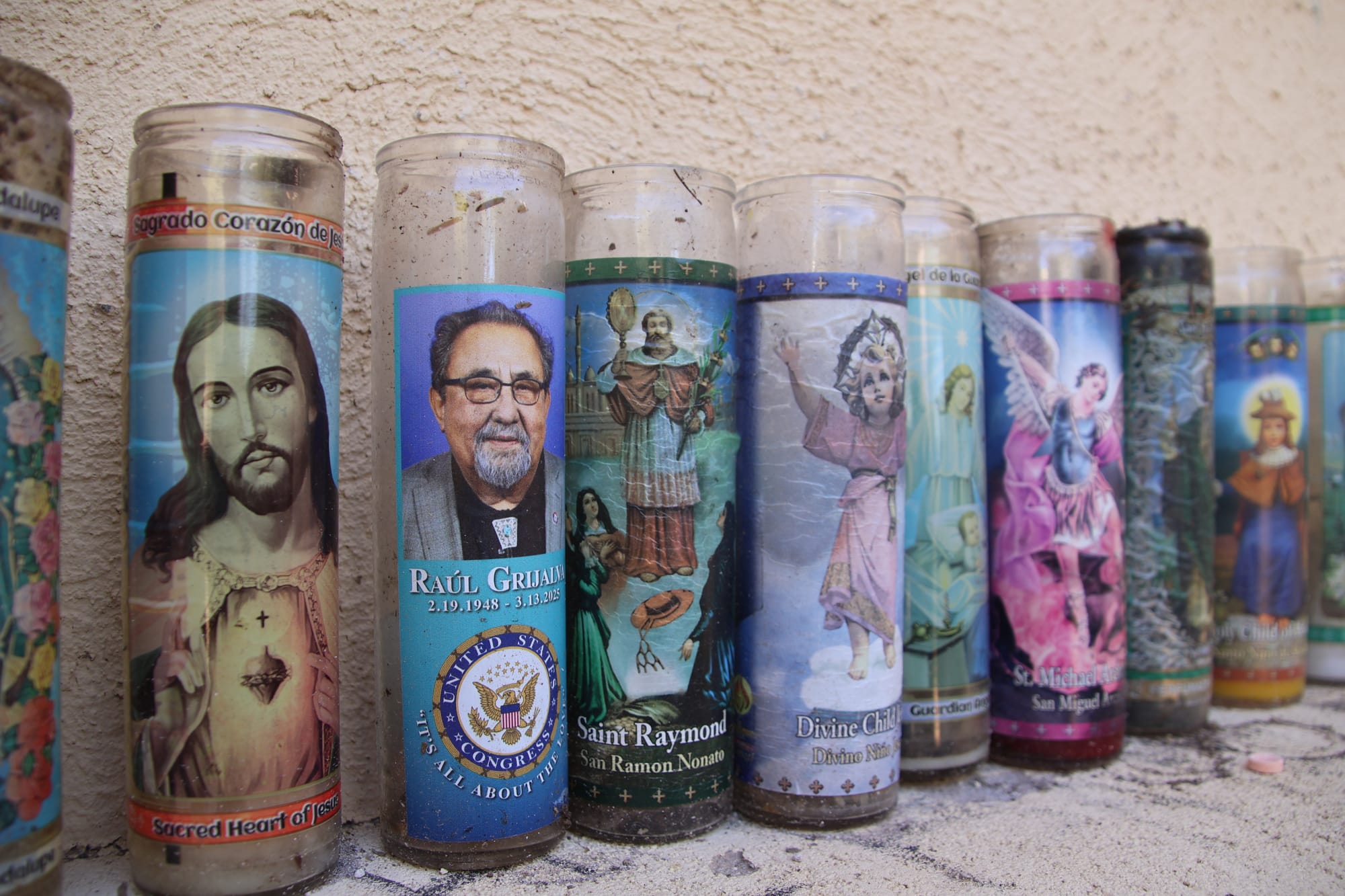
It’s not elaborate, just a wall, a gate and hundreds of candles, but it holds deep meaning for those who visit.
"I think it’s because it’s on the historic registry,” Shaar said. “It’s been fixed over the years, and the city maintains it. People are starting to realize how important it is again.”
As the sun sets, visitors bow their heads in prayer, touch the wall or place photos of loved ones on the weathered bricks. Layers of wax cover the ground, remnants of candles that have burned down to nothing over decades.
Among the evening visitors was Emily Lopez, a communications coordinator from Chicago exploring Tucson’s historic sites.
“My boyfriend and I came here because we were doing the Turquoise Trail,” Lopez said. “I’d never seen anything like this in a public place before. At home, we do a little altar for Day of the Dead, but this feels bigger — more open to everyone.”
The Turquoise Trail is a 2½-mile loop through downtown showcasing the city’s architecture and landmarks.
Lopez said she was struck by the shrine’s peacefulness.
“You can see how much meaning it has, even if you’re not from here,” she said. “It’s like you can feel the emotions people leave behind.”

Trejo said the candle-lighting tradition has remained remarkably consistent for more than a century, even as the site evolved into a tourist stop.
“The tradition of lighting candles at the shrine remains relatively unchanged in the last 100 years,” he said. “It also became a tourist spot, and it is when I believe the Americanized ‘wishing shrine’ transformation in name and use took place.”
During last weekend’s Día de los Muertos celebrations, the shrine’s candles took on an added layer of cultural meaning.
Honoring the dead through altars, marigolds and prayers is now part of Tucson’s annual tradition, but El Tiradito has been doing it quietly, year-round, for generations.
No matter the season, the shrine remains a place of comfort and hope. Some believe it brings good luck or answers prayers; others come simply to feel close to something human and timeless.
“Every time I am at the shrine, it is different,” Trejo said. “I’ve seen plates of food, TV dinners, stuffed animals, rocking chairs, Tonka trucks, saints and statues, paintings and clothing left at the shrine. It never looks the same.”
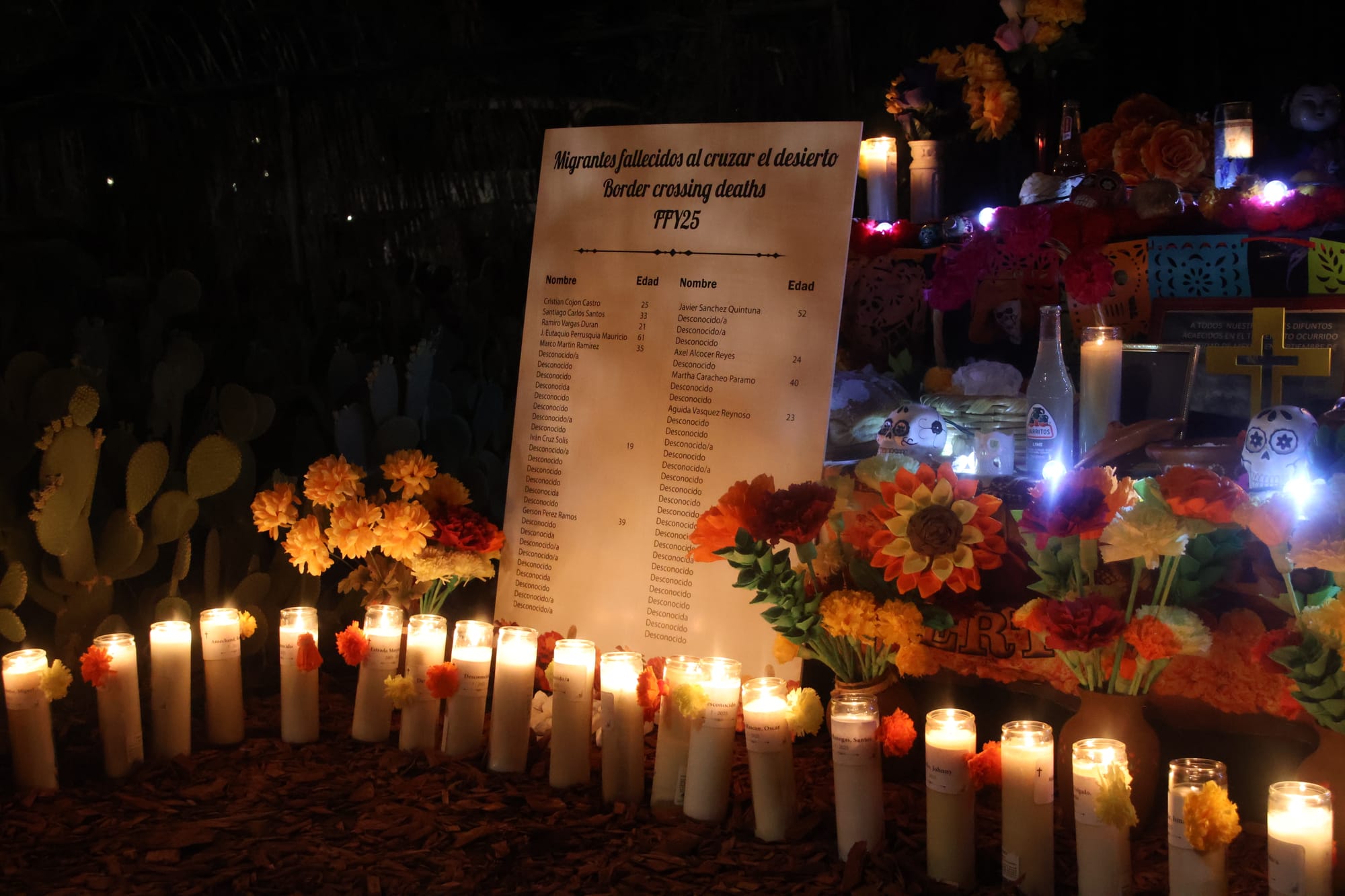



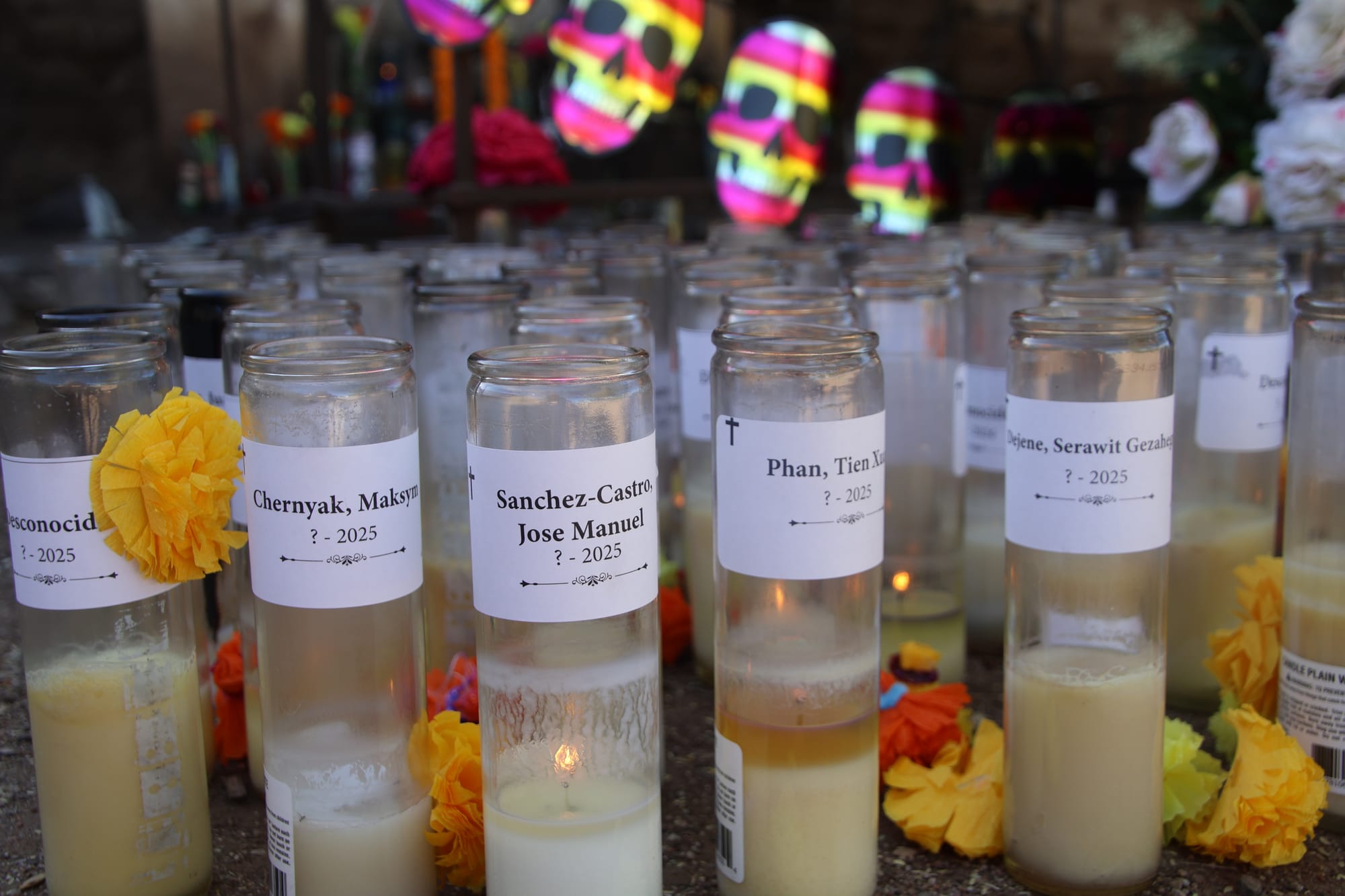
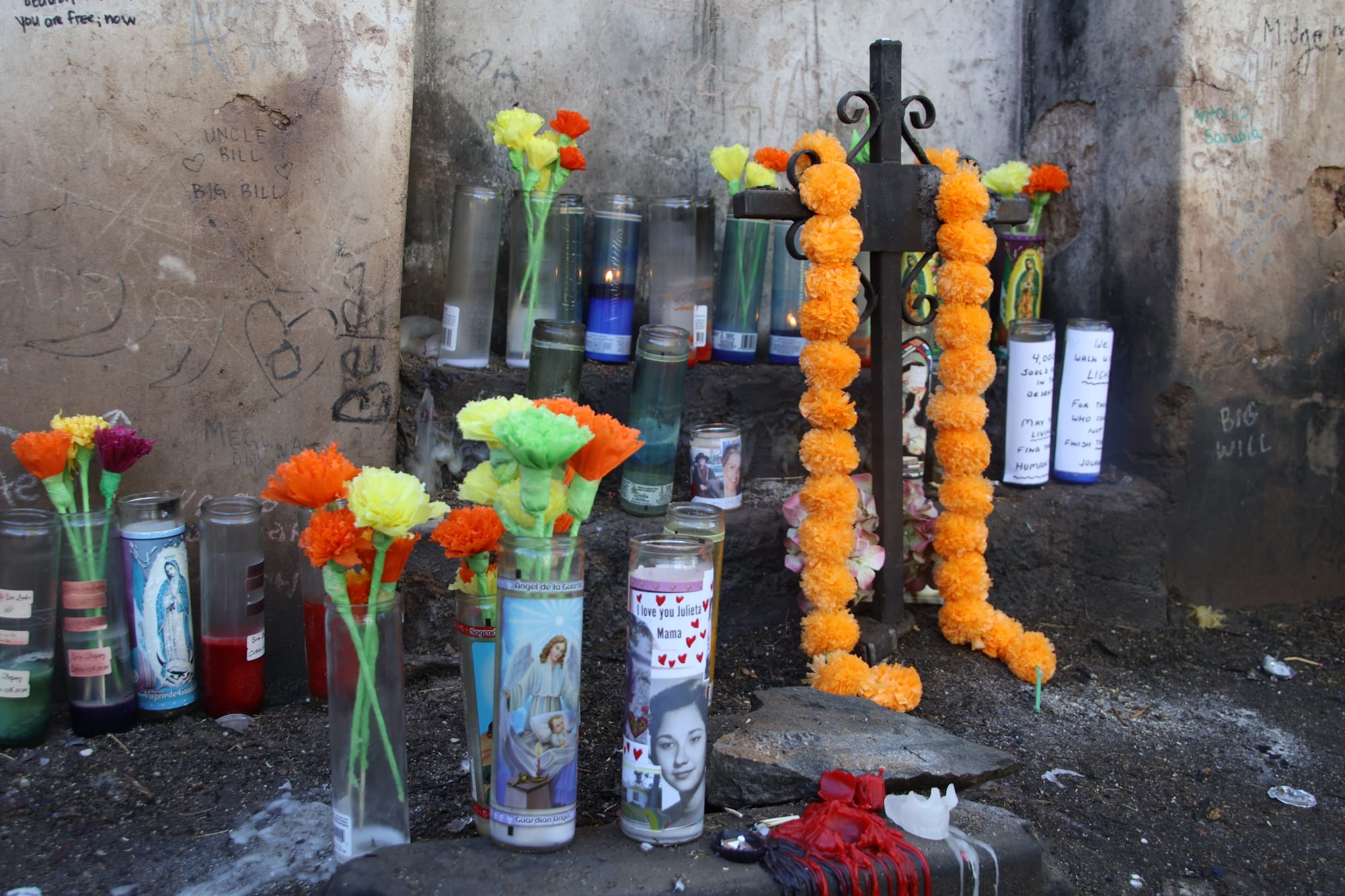
Topacio "Topaz" Servellon / Tucson Spotlight
Mannonova, Mohinur is a student in the University of Arizona school of Journalism.
Tucson Spotlight is a community-based newsroom that provides paid opportunities for students and rising journalists in Southern Arizona. Please consider supporting our work with a tax-deductible donation.

